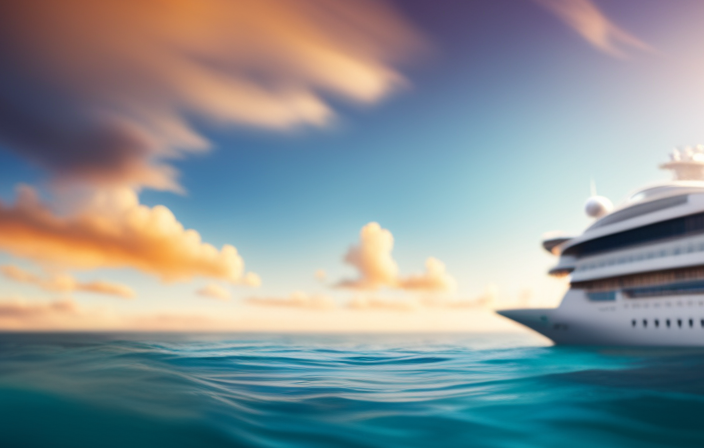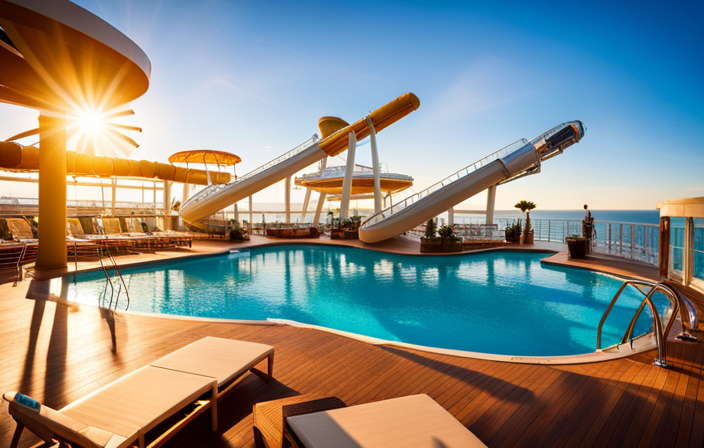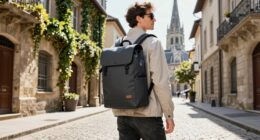A woodlands assessment functions as a guide for forest management, assisting in understanding and evaluating the resources within our forests.
In this article, we will delve into the definition, purpose, methods, and techniques used in timber cruises.
We will explore how these cruises play a vital role in sustainable forest management and delve into the training and certification required for timber cruisers.
Additionally, we will examine the challenges they face and the ethical considerations involved.
Furthermore, we will discuss their economic implications and showcase case studies of successful timber cruises.
Finally, we will touch upon future trends and potential developments in this crucial field.
So grab your gear as we embark on an enlightening journey through the world of timber cruises!
Key Takeaways
- Timber cruises play a crucial role in assessing forest structure and composition using remote sensing tools.
- Sustainable timber practices in timber cruises help minimize environmental impact and promote long-term forest health.
- Ethical considerations in timber cruises focus on responsible logging practices and the preservation of forests.
- Timber cruises provide essential tools for economic analysis in the forestry industry, including estimating the volume and value of standing timber and assessing market trends.
Definition and Purpose of Timber Cruises
A timber cruise is a survey of trees that helps determine their quality and quantity for harvesting purposes. It is conducted using specific methods and techniques that have been developed over time. These methods involve walking through designated areas of the forest and recording data about each tree encountered.
The data collected during a timber cruise includes measurements such as tree height, diameter at breast height, and species identification. This information is crucial for timber companies to make informed decisions about which trees to harvest and how much they can expect to yield.
To conduct a proper timber cruise, individuals usually undergo training and certification programs to ensure accuracy and consistency in data collection. These programs teach participants how to use various tools such as calipers, clinometers, and increment borers effectively.
Methods and Techniques Used in Timber Cruises
When conducting a timber cruise, I employ several methods and techniques to collect accurate data.
First, I traverse and map the forest by systematically walking through it and recording specific features such as boundaries, roads, and topography.
Next, I measure tree diameter and height using specialized tools like calipers and clinometers to ensure precision.
Finally, I calculate timber volume and value by using established equations based on the measurements collected during the cruise.
These steps are crucial in providing an accurate assessment of the forest’s resources.
Traversing and Mapping the Forest
As we venture through the dense forest, we can’t help but be captivated by the intricate beauty that surrounds us. Conducting a timber cruise requires traversing and mapping the forest accurately to assess its resources and ensure effective forest conservation. Here are four key aspects of traversing and mapping in a timber cruise:
-
Establishing transects: Transects are randomly selected lines used to collect data on tree species, density, and distribution throughout the forest.
-
Using compasses and GPS devices: These tools help navigate through the forest while recording precise locations for accurate mapping.
-
Identifying wildlife habitats: While traversing, it is important to note areas that serve as wildlife habitats, ensuring their protection during logging operations.
-
Documenting topographic features: Mapping includes capturing information about slopes, water bodies, and other physical characteristics of the terrain.
By carefully traversing and mapping the forest in a timber cruise, we can gather essential data for sustainable management while preserving crucial wildlife habitats.
Moving on to measuring tree diameter and height…
Measuring Tree Diameter and Height
Get ready to be amazed by the incredible heights and girths of these majestic trees as you measure their diameter and height, unlocking the secrets hidden within their towering presence.
Measuring tree diameter is a crucial step in timber cruising. To accurately determine this, I use a tape measure wrapped around the trunk at breast height (usually 4.5 feet above the ground). This provides an accurate representation of the tree’s girth, which is essential for estimating its volume.
Tree height is measured using various methods such as clinometers or hypsometers. By combining these measurements with mathematical formulas, we can estimate the total volume of timber that each tree holds. This information allows us to assess its value and potential usage in the timber industry.
Now let’s move on to calculating timber volume and value based on these measurements.
Calculating Timber Volume and Value
To truly understand the worth of these magnificent trees, you’ll need to delve into the intricate process of determining their volume and evaluating their value.
Calculating timber volume is a crucial step in assessing the amount of wood that can be harvested from a forest. This involves measuring the diameter and height of individual trees and using mathematical formulas to estimate their total volume.
Estimating timber value goes hand in hand with calculating timber volume. It takes into account factors such as tree species, market demand, quality of wood, and current prices to determine the monetary worth of the timber.
By accurately calculating timber volume and estimating its value, forest managers can make informed decisions about sustainable harvesting practices and ensure the long-term health of the forest ecosystem. Understanding these calculations is vital for effective forest management.
Importance of Timber Cruises in Forest Management
When managing a forest, timber cruises are essential for understanding the value of the trees and ensuring sustainable resource management.
The importance of data collection during timber cruises cannot be overstated. Accurate timber inventory is crucial in determining the volume and value of timber resources present in a particular area.
This information helps forest managers make informed decisions regarding harvesting, conservation, and overall forest health.
By collecting precise data on tree species, size, quality, and location, timber cruises provide valuable insights into the potential yield and economic viability of a forested area.
Furthermore, these cruises help monitor changes in the forest over time, allowing for adaptive management strategies to be implemented.
Training and certification for timber cruisers ensure that accurate data is consistently collected and analyzed by qualified professionals.
With this foundation established through timber cruises, effective forest management practices can be implemented seamlessly.
Training and Certification for Timber Cruisers
To become a skilled professional who can expertly navigate through the forest, identifying different tree species and assessing their health and value, proper training and certification are necessary. Several training programs are available that adhere to industry standards and cover various aspects of timber cruising. These programs include forest inventory techniques, tree measurement methods, and data collection protocols. They also provide knowledge on timber appraisal methodologies and the use of technology such as GPS devices and computer software for data analysis. Field exercises are often included in these programs, allowing participants to practice their skills under the guidance of experienced professionals. Upon completion of these programs, individuals can obtain certifications that validate their competence as timber cruisers.
Transitioning into the subsequent section about the challenges and limitations of timber cruises, it is essential to understand how these factors impact the accuracy of forest management decisions.
Challenges and Limitations of Timber Cruises
One major hurdle in accurately assessing forests is the limited visibility caused by dense foliage and uneven terrain. These challenges pose significant limitations on the effectiveness of timber cruises.
It can be difficult for timber cruisers to navigate through dense vegetation, making it challenging to measure tree heights, diameters, and volumes accurately. Additionally, uneven terrain can make it hard to access certain areas of the forest, leading to incomplete data collection.
Furthermore, weather conditions such as rain or fog can further hinder visibility and impede accurate assessments.
Despite these challenges and limitations, advancements in technology and innovations have been developed to overcome these obstacles. These developments will be explored in the subsequent section about technology and innovations in timber cruises.
Technology and Innovations in Timber Cruises
Get ready to be amazed by the incredible advancements and mind-blowing innovations that have revolutionized the assessment of forests! Technology advancements in timber cruises have greatly improved accuracy and efficiency. One game-changing technology is remote sensing. Through the use of satellite imagery, LiDAR technology, and aerial surveys, foresters can gather precise data on forest structure and composition without physically visiting every location.
This technology not only saves time but also reduces costs associated with fieldwork. Remote sensing tools provide highly detailed information about tree height, crown density, and even species identification. By harnessing these techniques, foresters can make more informed decisions regarding sustainable practices and ethics in timber cruises.
Now, let’s transition into the subsequent section about sustainable practices and ethics in timber cruises…
Sustainable Practices and Ethics in Timber Cruises
Utilizing innovative technology in forest assessments has not only improved accuracy and efficiency but has also paved the way for sustainable practices and ethical considerations. When conducting timber cruises, it is important to prioritize sustainable timber practices. This involves adopting methods that minimize environmental impact and promote long-term forest health.
Ethical timber harvesting is another crucial aspect of timber cruises. It entails adhering to regulations and guidelines set forth by governing bodies to ensure responsible logging practices. To achieve sustainability and ethicality in timber cruises, the following measures can be implemented:
- Implement selective logging techniques to minimize damage to non-target trees.
- Maintain buffer zones around water bodies and sensitive habitats.
- Replant harvested areas with appropriate tree species to restore biodiversity.
- Monitor and control invasive species that can negatively impact the ecosystem.
By incorporating these sustainable practices and ethics into timber cruises, we can ensure the preservation of our forests for future generations while still meeting our societal needs for wood products.
Transitioning into the subsequent section about the economic implications of timber cruises, it is essential to consider how these sustainable practices can also have positive economic impacts on the industry as a whole.
Economic Implications of Timber Cruises
Timber cruises provide an essential tool for economic analysis in the forestry industry. By systematically measuring and recording various tree attributes such as size, species, and quality, timber cruisers can estimate the volume and value of standing timber on a specific tract of land. This information is crucial for determining market trends and making informed decisions regarding forest management practices.
Economic analysis based on timber cruise data enables foresters and landowners to assess the financial feasibility of logging operations, evaluate potential revenue streams from timber sales, and understand the long-term economic implications of different management approaches. By understanding these market dynamics through timber cruises, stakeholders are better equipped to make strategic choices about their forests’ future.
This knowledge gained from economic analysis during timber cruises opens up opportunities for case studies and examples of successful timber cruises.
Case Studies and Examples of Successful Timber Cruises
Imagine the thrill of uncovering hidden riches as you delve into real-life success stories of individuals who have unlocked the economic potential of their forests through meticulous data collection and strategic decision-making.
These case studies provide concrete examples of successful timber cruises that have yielded substantial returns on investment.
One such example is the case of a small-scale landowner in Oregon who conducted a timber cruise and used the resulting data to identify high-value timber stands. By strategically harvesting these stands and selling the timber at optimal market conditions, this landowner was able to generate significant revenue and improve overall forest health.
Another successful example comes from a large timber company in Canada that employed advanced technology during their timber cruise, enabling them to accurately estimate volume and value of timber resources. This allowed them to optimize harvest operations and maximize profitability.
These case studies demonstrate how effective timber cruises can lead to both economic prosperity and sustainable forest management practices.
Looking ahead, future trends and potential developments in timber cruises will continue to enhance accuracy, efficiency, and sustainability in forestry practices.
Future Trends and Potential Developments in Timber Cruises
Get ready to be amazed by the exciting advancements and possibilities that lie ahead in the world of timber cruises. Technology and innovation will revolutionize the way we manage and optimize our forest resources, enhancing accuracy, efficiency, and sustainability.
Future trends in timber cruises are driven by technological advancements that promise to enhance accuracy, efficiency, and sustainability. Here are two sub-lists showcasing the potential developments:
-
Future Trends:
- Integration of remote sensing technologies like LiDAR and drones for more precise data collection.
- Adoption of machine learning algorithms to automate data processing and analysis.
-
Technological Advancements:
- Development of mobile applications for real-time data collection in the field.
- Utilization of Geographic Information Systems (GIS) for spatial analysis and decision-making.
The combination of these future trends and technological advancements will enable us to gather more accurate information about forest resources, improve sustainable management practices, and ultimately contribute to a healthier ecosystem.
Frequently Asked Questions
How long does a timber cruise typically take?
A timber cruise typically takes several days to complete. The duration depends on the size and complexity of the area being surveyed. During the timber cruise process, data is collected on tree species, size, quality, and overall forest health.
What are the potential risks and hazards associated with timber cruises?
During a timber cruise, potential risks and hazards include falling trees, rough terrain, inclement weather, wildlife encounters, and equipment malfunctions. Safety precautions like wearing protective gear and following proper procedures are essential to mitigate these dangers.
Are timber cruises conducted on public or private lands?
Timber cruises can be conducted on both public and private lands. Public lands, such as national forests, require permits for timber harvesting. Private lands, owned by individuals or companies, may have their own regulations for timber cruises.
Do timber cruises take into account the ecological impact of logging?
Yes, timber cruises take into account the ecological impact of logging practices. They assess and analyze the potential effects on ecosystems, including soil erosion, water quality, wildlife habitat loss, and biodiversity changes, to promote sustainable forestry management.
How do timber cruises contribute to the local economy?
Timber cruises play a vital role in the local economy by evaluating timber resources and estimating their value. With a keen eye on timber cruise benefits, these assessments provide valuable information for logging operations and contribute to the economic impact of the industry.
Conclusion
In conclusion, timber cruises play a vital role in forest management. They provide accurate data on timber resources, helping to ensure sustainable practices and ethical decision-making.
Timber cruisers undergo rigorous training and certification processes to ensure their expertise in methods and techniques used during the cruise.
While there may be challenges and limitations, such as variability in timber quality assessments, the economic implications of timber cruises cannot be ignored.
As we look towards the future, advancements in technology and data analysis will likely shape the development of timber cruises even further.










